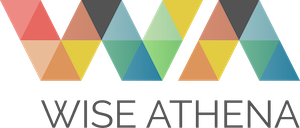Making pricing decisions has never been easier. Thanks to AI and all other tools on the market that you can make quick and accurate price decisions.
BUSINESS PROBLEMS
Demand forecasting is an important task faced by the distribution industry. It assists sales departments and revenue management teams in budget optimization. By providing a projection of future requests, forecasted demand is an essential detail for informed decision making. In gaining a thorough understanding of seasonal trends, businesses save time by allowing inventory managers to avoid depleting their supply of goods.
The scope of inventory management spans beyond manufacturing. The ‘pricing subject’ has a significant impact on brand evolution since it considers both the tangible and intangible influences on consumer perception. Consumer trends show customer loyalty towards retailers who offer better discounts than competitors. Whereas companies invest large sums into marketing campaigns, the proven key for developing loyal customers is a matter of price point.
Current economic structures provide consumers with an excess of choice, making it necessary for companies to have a competitive edge. In a highly saturated market, demand forecasting is becoming an increasingly complicated, yet essential task. Factors such as seasonal trends, new product launches, and competition must be taken into consideration. Due to this complex structure, demand forecasting is a task best suited to be handled by effective machine learning techniques.
How Do Companies Control Demand Forecasting Without AI?
Numerous Consumer Packaged Good (CPGs) companies continue to use traditional approaches to ‘predict’ the behavior of their products on the open market. Many base these projections on historical data and performance trends.
Other companies use calculated methods, though they invest significant operating power and man-hours into the work. Since the workers must aggregate the data from multiple sources to get an accurate result, companies either invest excessive time or make decisions without the full scope of information.
Many companies use basic forecasting methods or moving averages based on past data. Although these methods are useful for predicting regular or stable products, they fall short when dealing with variable products. Traditional Approaches cannot fully account for seasonal trends, fluctuating product demands, new launches, or daily changes resulting from market discrepancies.
Standard Approaches use econometric concepts such as price-demand elasticity. This estimates the impact of a rise or fall in the price of a product on the market. Normally, companies tend to work with highly aggregated data by calculating price elasticity for an entire product category rather than for each product in the category. This is usually due to a lack of tools that are needed for more advanced calculations.
This can project an over-simplification of the product price behavior which is not the case in reality as different factors have a unique impact on price elasticity for different products in the same category. Therefore, data must be aggregated at the lowest level for accurate projections.
Unfortunately, this oversimplifies the demand forecasting process. The demand for a product is affected by numerous factors including, but not limited to, shifting market trends, non-constant price points, geography, time of year and competitors. Therefore, using limited parameters will lead to poor forecasting results.
CPGs can improve efficiency by combining Artificial Intelligence (AI) with standard econometrics. In automating certain tasks, these businesses can save working hours, and optimize promotional budget generation. Allowing these companies the opportunity to use this competitive advantage to gain a larger market share.
Thanks to AI and machine learning algorithms, demand forecasting produces more accurate results, something that has a significant impact on long-term business operations. A study conducted by the McKinsey Global Institute shows that global benefits from AI total $400 – $800 billion for the retail industry alone.
How To Use AI
For Demand
Forecasting
When AI is properly used, demand forecasting can function as a very valuable starting point for creating business plans for the upcoming year. The behavior of the retail products is modeled accurately by including a large number of features from different data sources. In doing so, the result of a price change on demand for a future period can be predicted in an accurate manner. Gradient boosting algorithms or neural networks outperform classic statistics-based methods for this task.
Given the complexity of the algorithm, it is possible to derive more information than just the impact of the product price. Other predictive factors include the effect of competitors or cannibalizations.
The latter refers to a price change for one product impacting the sale of other items of the same brand. Machine learning models capture underlying relationships between products, they use this information to recommend the prices of each product while maximizing revenue for the whole portfolio.
Through AI, we can analyze trends, seasonal shifts, and daily sales patterns in order to identify the most critical demand planning opportunities. With AI, managers can optimize prices to increase profit margins or sales volumes by as much as 50%. Businesses can run this operation for the entire portfolio of products while setting variable weekly prices, significantly improving profitability while minimizing labor requirements.
By knowing the impact of competitors’ promotional actions, AI can simulate different price scenarios of the company’s products and those of the competition. This information can be used to determine the optimal distance in price in relation to that of the competition. It also allows the business to consider value slopes among sizes or presentations of the same product.
In using clustering algorithms, behavioral similarities between products or stores are easily detected. With this information, CPGs and retailers can guide promotional actions based on product groups or geographical areas with similar behavior patterns.
Adding value, AI minimizes the uncertainty of a product launch by providing accurate comparisons with other similar products that launched under the same conditions. Helping businesses guide promotional actions and marketing campaigns to limit risk and maximize profits.
Due to the skill of AI and machine learning, CPGs can dispose of time-consuming traditional static forecasting. With this modern approach, companies can operate with up-to-date estimations thanks to the continued processing data feed and the machine’s ability to learn by experience.
In conclusion, as a result of using AI to generate demand forecasts, the industry will begin to optimize the market due to accurate projections. By using this information to assist with cost optimization, companies can make informed pricing decisions. When using AI to analyze business details, companies maximize their returns on investment and gain the opportunity for volume capitalization to drive manufacturer growth. In a complex global economy, companies must reassess traditional practices and merge their methods with modern AI techniques in order to stay competitive in the marketplace.
Wise Athena helps CPG companies optimize Pricing & Trade Promotions strategies with A.I., giving clients insight into seasonal trends, fluctuating product demands, and daily changes resulting from market discrepancies. We’ve proven that we can increase sales and margins in less time, and with less effort, with data harmonization capabilities, high definition elasticity, and prediction certainty between 85-95%.





